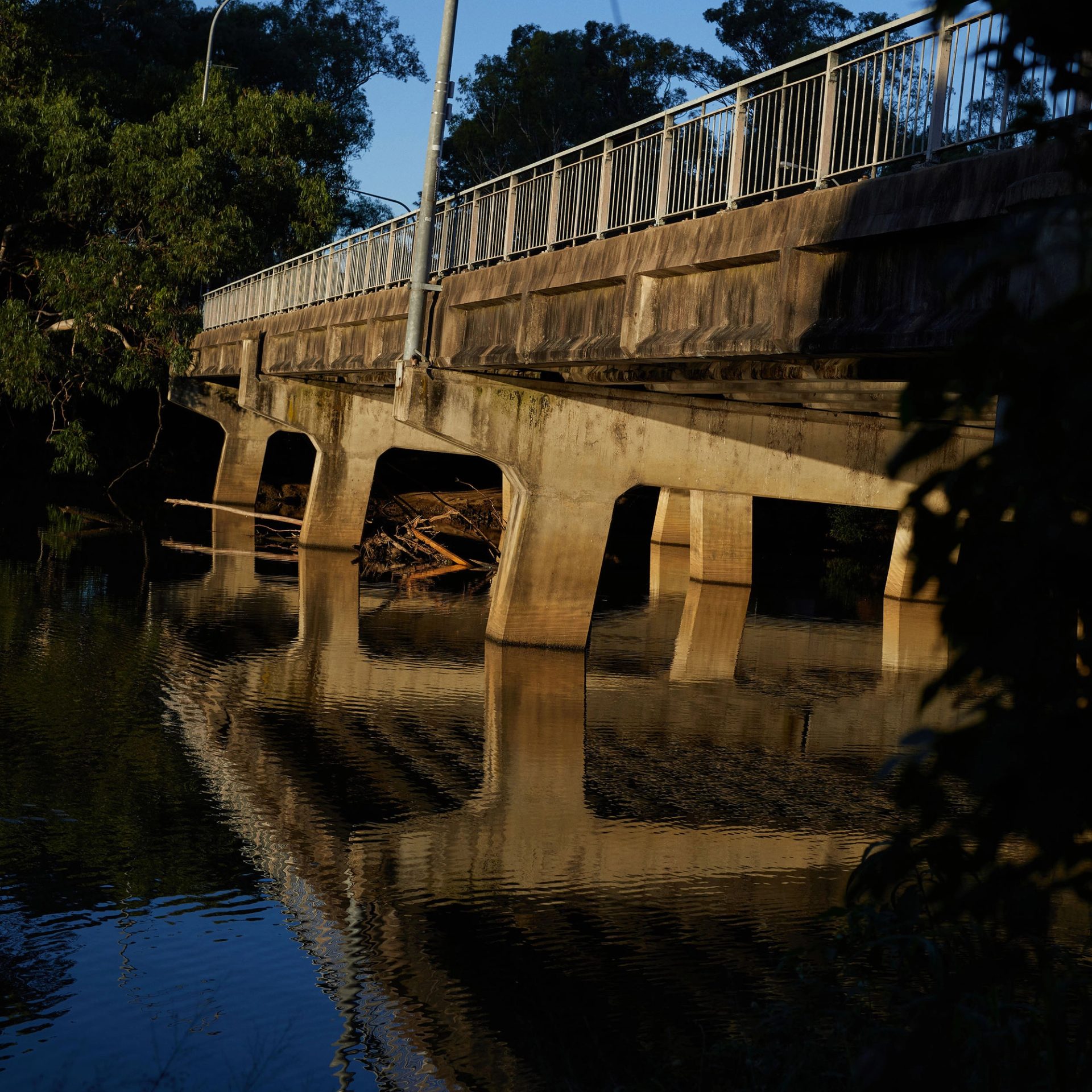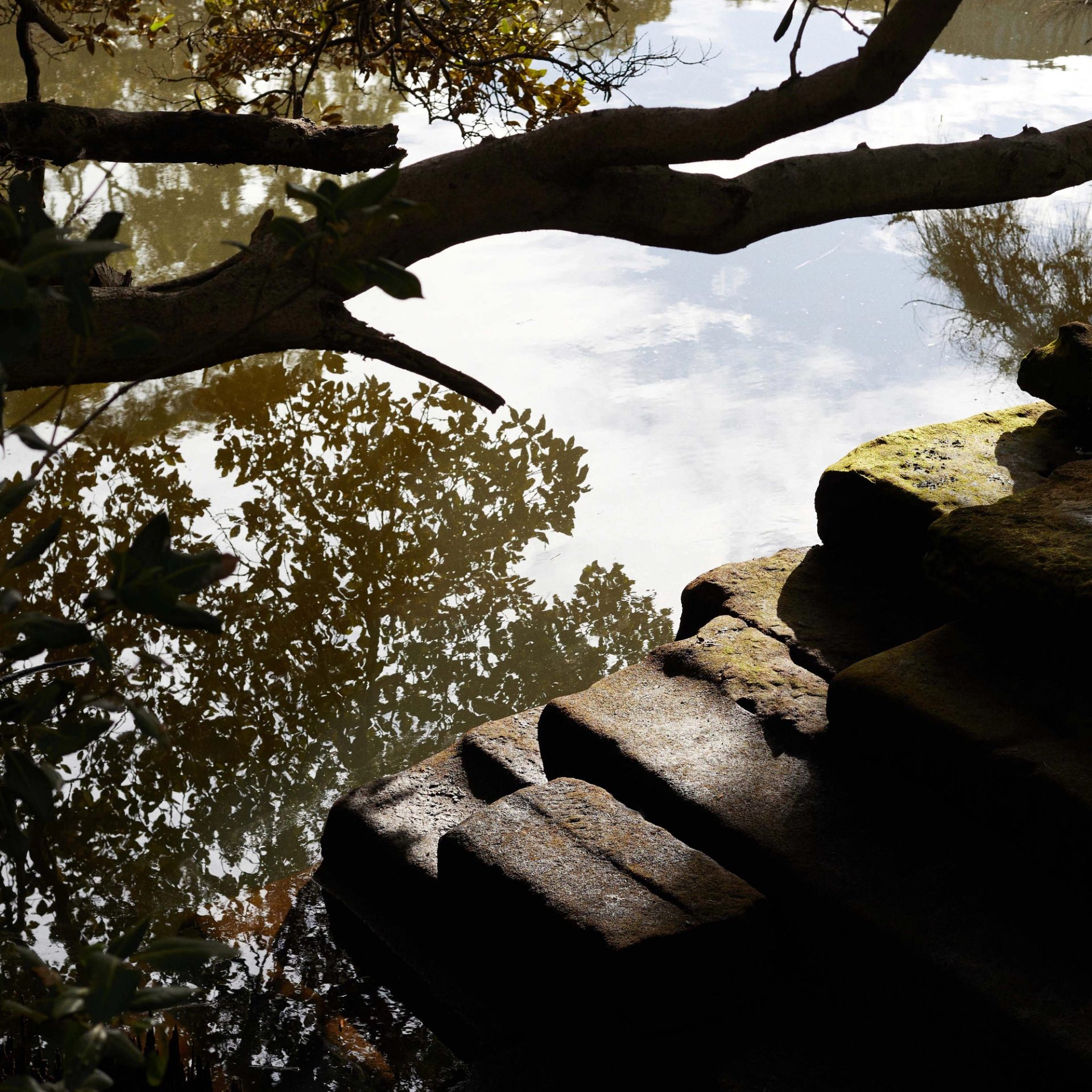Rivers Here and Rivers There

Jiva Parthipan was commissioned by Powerhouse to write this essay for The River, a series of new writing and photography responding to the landscape, communities and histories surrounding the Parramatta River.
Rivers Here and Rivers There
My father died.
I wasn’t here, in my home near the Parramatta River, in the community where, after multiple migrations, most of my family now lives. I was in India, near another body of water, having an alternative treatment for my Parkinson’s disease.
I missed the funeral but I made it back for the 31st day after his passing – a day on which Sri Lankan Tamil Hindus perform anthiyesti, a ritual involving food, prayer and family which is meant to release the deceased from reincarnation so that, unlike us, they are freed from the burden of inhabiting a body and can enjoy the afterlife or be reborn.
On the living room floor of my apartment in Westmead, I made pindams with our priest. Together we rolled the balls of cooked rice, ghee and sesame seeds in the palms of our hands as prayers flowed from our mouths. My family and friends looked on. We offered these pindams to our ancestors, to my father and to his departed soul. Lamps were waved anti-clockwise, normally they are waved clockwise in Hindu rituals but when death comes time travels backwards.
Later that evening, I scooped the pindams up in my hands and went by myself to offer them to the river.

I walked under the bridge to the dark underside of the path that skirts around the river and stood there as the light faded for the day, wondering if my Parkinson’s and the slippery moss that grows there would make my legs give way beneath me and land me in the river. But it didn’t. I stuck the rice balls in my hands under the water and made my offering. I watched the fish gather and nibble at them until they disappeared and I felt at peace with having missed the funeral.
In my art practice, over the course of many years, I’ve become more and more interested in ritual. Rituals are doing, feeling things. I do not know why, in my culture, death and life always begins and ends on the banks of a flowing river but I do know that ritual is an important part of all of us. The doing is the meaning of the ritual. If you want to know all the words and procedures, use them to give a speech instead.
Part of the reason why so many rituals take place on rivers in both Sri Lanka and India, and elsewhere, is because the river is a place that joins the sea and eventually touches all the lands we come from and beyond that. Here at the source of the Parramatta River in Parramatta I have seen Thais put candles into the river as part of Loy Krathong, and Chinese people release fish as part of Lunar New Year celebrations. We are all revisioning our stories on this river and sending them off to connect to the seas that lap up on the shores of the countries that we are also connected to. They are the same rituals but this new place gives them a new meaning.
It’s an evolving project – making sense of our new lives in Australia. I think of this every time I go to the annual Pride picnic here or my mother tells me about her pensioners’ day out as we stroll together along the river bank.
A few days before I offered rice balls to my father here, I had immersed his ashes in Satyam Ghat, an approved council space for the immersion of ashes into the Georges River, south west of the Parramatta River.
I’ve been thinking about rivers and waterways a lot over the past few years since I was commissioned by the Biennale of Sydney to make The River Project in 2022 – a performative walking tour which looked at how Mandean, First Nations, scientific and leisure communities use the Georges River based on their cultures and rituals.

When I submerged some of my father’s ashes in the Georges River I was taking part in a Hindu ritual that has existed for thousands of years on the River Ganges in India where people immerse the ashes of their loved ones. These centuries-old traditions have evolved here in our local waterways. These rituals help communities like mine to conceive of how we can live and die in this land so far away from where these rituals began – and may reconcile ourselves to living here. The river flows – she has her own logic taking us with her. Maybe we are a part of her just like she is a part of us.
As an artist, I feel a kind of urgency to record these watery rituals. It’s an urgency that I can’t quite put words to yet but I know that I need to immerse myself in the doing of the ritual – that that’s the important thing – that my body is a part of this and that I must keep going. It began with the Biennale project and it continued with my father’s death.
I come back from overseas, I pick up the urn the next day and take it to the Georges River, then the next day I am at the Parramatta River with rice balls. I get a friend to video it. I keep moving. The dynamics of rivers are a metaphor for life: they are flowing rather than stagnant.
In the evenings on this part of the Parramatta River, which is so close to the large South Asian communities of Harris Park and surrounds, people promenade in saris, sarongs and other day to day wear. It’s a tradition in lots of hot countries, people go for a walk to catch the cool breeze by waterbodies – be it a river or the sea – they stop and chat to their neighbours as they do here. Their children play. They make plans for the future.

The nightly scene at the Parramatta River reminds me of Galle Face Green in Colombo, a park by the sea where the old colonial-era parliament building still stands. It’s a place where Sri Lankans go to promenade at night, their brown bodies passing the pale sandstone facades built by the British who colonised this place. Those buildings, that scene, doesn’t look all that different from people walking past Old Government House here in Parramatta, where these old buildings are dwarfed by modern high rises.
When walking down the river with a Sri Lankan Tamil friend of mine we talked about the Mahaweli Ganga River in Sri Lanka which was one of the main catalysts for the decades-long civil war. The war led to countless deaths, communal distrust and many Tamils seeking asylum or simply migrating aboard. From the late 1970s to the mid-80s, the Sinhala ethnic majority government rerouted the main river of Sri Lanka – the Mahaweli Ganga. Large numbers from the Sinhala community were moved towards these areas. Many were armed by the government to ensure they could take and hold land which became more prosperous once there was greater access to water. This changed the power dynamics and created resentment in an area which previously had a more balanced number of Sinhala and Tamil residents. Determining why conflict happens is always a complex thing but we know that it was this move which ultimately led to the civil war as Tamil and Sinhala communities fought for access to water from the same river. The government organised various festivals across the country as part of the propaganda to accept the rerouting. The government brought TV cameras and reporters into my province and many of the children, like me, went and performed river dances. We had sparkly bits hanging off our bright water-like costumes and the TV crews filmed us jumping joyously into the river after we danced. But deep down I also knew what my parents talked about in hush-hush tones with our Tamil family and friends. They knew the rerouting of that river was a disaster for minority Tamils like us.
Rivers mean life and death to many of the communities who walk the Parramatta River in ways that aren’t necessarily connected to traditional spiritual rituals. In many ways it would be accurate to say that I am now living near the Parramatta River because of the conflicts that broke out around a river in another country, in another hemisphere.

Rivers will always make me think of dancing, not just because I danced on them as conflict developed but because dance and other art forms are how I explore my history and my relationship to place.
These days, my artistic practice has moved beyond dance to encompass multi disciplinary arts as a creator, director and community activist but I still dance in the privacy of my flat (for the gods to see). It’s a different kind of dancing as my Parkinson’s disease continues to develop but dancing has always been part of my art practice. It connects me to this place and others at the same time. I have creatively produced many pan-African dance shows at the Riverside Theatres in Parramatta.
Many people in this place have fled conflicts about the rights to access rivers, from countries all over the globe. When they walk by the river, I wonder, do they think of the Nile and the Euphrates and Tigris Rivers whose contested waters brought their families here? Do their minds hold memories of baptisms and funeral ceremonies along rivers they can no longer access? On these seemingly serene waterscapes there are many transnational memories of contested histories and of course local ones as well – the river has been a site of resistance and refuge for many of our First Nations peoples.
As I dissolved the pindams after the anthiyesti ritual of my appa in the Parramatta River, the river became part of my family story. I placed my soul and my history and my ritual into the river and it became my homeland.
First Nations languages are part of oral traditions that have existed for millennia and do not directly translate into the Roman alphabet, as used in English. Therefore, First Nations languages’ sounds have been interpreted in many different spellings. This means that the same words, including language groups and place names may be spelled in two or three different ways. For this publication, we have privileged the spellings of First Nations words the way the authors have suggested unless advised otherwise by Traditional Owners.
Writer
Jiva Parthipan is a curator, director and community artist based on Dharug country, Sydney and working internationally. He has a Masters in Performance with Distinction from Goldsmiths College, University of London and his multidisciplinary works have been performed at galleries and festivals in the UK, Europe and Australia, including Tate Modern (London), Bone Festival (Bern), Performance Space (Sydney), and IETM in Paris and Dublin. In Australia his creative producer credits include Handfed at MCA; Little Baghdad with Powerhouse Youth Theatre and the Australian Museum; and Older Than Language as co-curator for Salamanca Arts, Hobart. As cultural development officer at STARTTS in Western Sydney, Jiva‘s work mediates artists from diverse emerging communities.
The River

The River is a collection of new Australian writing and photography responding to the landscape, communities and histories surrounding the Parramatta River. Featuring Lachlan Brown, Willem Brussen, Felicity Castagna, Anwen Crawford, Maarama Kāmira, Joseph Mayers, Fiona Murphy, Conor O’Brien, Jiva Parthipan and Vivian Pham.
Writer: Jiva Parthipan
Commissioning Editor: Felicity Castagna
Head of Writing, Powerhouse: Jemma Birrell
First Nations Cultural Advisors: Beau James, Nathan Mudyi Sentance
Senior Editor, Powerhouse: Katrina O’Brien
Photos: Conor O’Brien
























